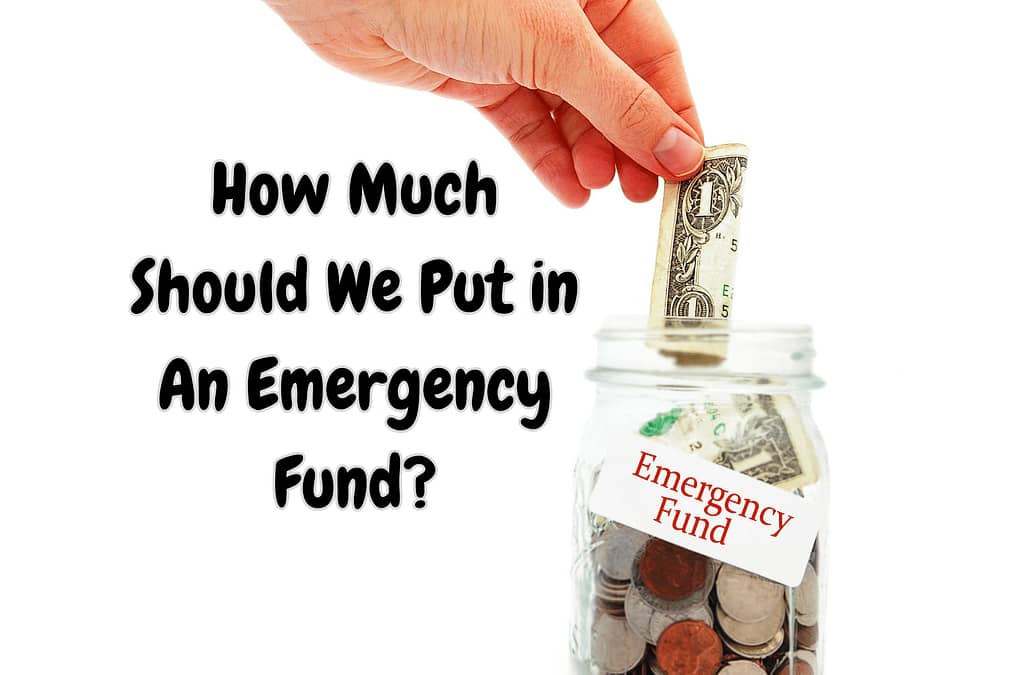One of the most important lessons we have learned from the last few years is the significance of saving money for emergencies. We’ve faced economic hardships unlike any in recent memory. Emergency funds can help us navigate challenging times, safeguarding our wealth, lifestyle, health, and preventing debt accumulation.

When life throws unexpected challenges, an emergency fund ensures you don’t have to dip into your assets. For instance, during the COVID-19 Pandemic in 2020 and 2021, many Americans found themselves withdrawing from retirement accounts and other investments to cover unforeseen expenses.
Setting Up an Emergency Fund: Best Practices
While some stash emergency cash in unconventional spots like sock drawers or under mattresses, it’s crucial to ensure your emergency money is both protected and accessible. Most financial experts recommend opening a savings account, be it at a local bank, credit union, or online bank. This not only safeguards your money but also ensures it’s there when you need it.
Where should you store your emergency fund?
Traditional Savings Account:
Often linked to a checking account, they limit monthly transfers and withdrawals but offer a small interest rate.
Money Market Account (MMA):
A hybrid of checking and savings accounts, MMAs might offer higher interest rates and come with checks and debit cards.
High-Yield Savings Accounts:
Online banks and investment firms often provide these, requiring a significant initial deposit but offering attractive interest rates.
Remember, the goal is to keep your money safe yet accessible. Investing emergency funds or locking them in bonds isn’t advisable. You need quick access during emergencies.
Determining How Much to Save in Your Emergency Fund
The ideal amount varies based on:
- Individual vs family: Consider the number of dependents.
- Age: Younger individuals might need less.
- Area where you live: Living costs vary by location.
- Lifestyle and assets: Account for monthly expenses.
- Level of comfort: Personal preference on the cushion amount.
For those starting, a “Starter Emergency Fund” is recommended. Financial industry experts often suggest beginning with $1,000, and then focusing on clearing bad consumer debt. Once that’s tackled, you can expand your emergency fund to cover more extensive periods.
When to Use Your Emergency Funds: Key Considerations
Personal finance is, well, personal. Everyone has their definition of an emergency. However, a general consensus is that an emergency:
- Is unexpected.
- Requires immediate financial attention.
- Is absolutely necessary.
For instance, car wrecks, sudden hospitalizations, or major home repairs qualify. But with patience and creative financial planning, some emergencies can be managed without dipping into these funds.
Steps to Start Building Your Emergency Fund
- Budgeting: Organize your income and expenses, setting aside a portion for emergencies.
- Live Below Your Means: Cut non-essential spending to boost your savings rate.
- Increase Your Income: Consider asking for a raise, starting a side hustle, or taking a second job.
- Sell Unneeded Items: Decluttering can provide a quick cash influx.
In Summary
Life is unpredictable. Think of an emergency fund as your insurance policy, sans the red tape. Start with a basic fund, then aim to save 3-6 months of living expenses. The amount you save is influenced by your personal circumstances and comfort level. Ultimately, emergency funds are the bedrock of financial freedom, ensuring you’re prepared for life’s unexpected twists and turns.
 How to Handle Credit Collection Services (CCS) on Your Credit ReportOctober 24, 2023
How to Handle Credit Collection Services (CCS) on Your Credit ReportOctober 24, 2023 How to Cancel Your Credit One Card: A Step-by-Step GuideNovember 28, 2023
How to Cancel Your Credit One Card: A Step-by-Step GuideNovember 28, 2023 How to Handle Transworld Systems (TSI) on Your Credit ReportDecember 6, 2023
How to Handle Transworld Systems (TSI) on Your Credit ReportDecember 6, 2023 How to Remove Hard Inquiries from Your Credit Report in 15 MinutesOctober 10, 2023
How to Remove Hard Inquiries from Your Credit Report in 15 MinutesOctober 10, 2023 How to Get Rid of Ability Recovery Services on Credit ReportDecember 14, 2023
How to Get Rid of Ability Recovery Services on Credit ReportDecember 14, 2023










